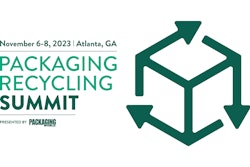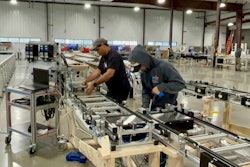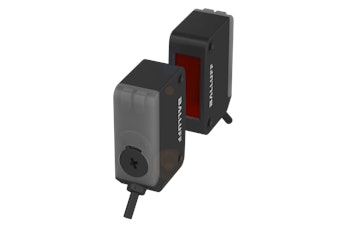
JTM Foods, LLC of Erie, Pa., has been making snack pies and crispy treats for the past 30 years. Its snack pies are growing especially popular, not only under its own JJ’s Bakery brand but also under a number of powerhouse brands and retailers for whom JTM co-manufactures. So it’s little wonder that, faced with growing demand, new and improved packaging capabilities have been added lately.
The most notable such addition is Line F, with the manufacturing capabilities to produce single-serve snack pies in folding cartons. As senior vice president of operations Joe Amboyer and his team began evaluating systems that would populate Line F, five things were at the top of the list: safety, consistently high quality, speed, versatility, and ease of changeover. All five are fully displayed in the secondary packaging equipment selected: a tri-functional robotic packaging cell from Sacmi. The top-loading system produces four distinctly different corrugated tray formats from single-wall corrugated blanks made of 32 ECT C-flute corrugated: Shown here is the end-of-arm tooling that closes and compresses a corrugated lid onto the 48-count corrugated tray of cartoned pies.
Shown here is the end-of-arm tooling that closes and compresses a corrugated lid onto the 48-count corrugated tray of cartoned pies.
• 8-count open tray
• 12-count open tray
• 12-count tray incorporating what JTM calls a “comb-over” lid
• 48-count tray with a separate corrugated lid that is glue-applied over the top
Running at what JTM calls “high speeds,” the Sacmi system is referred to as “tri-functional” because it 1) erects corrugated trays from blanks in one station, 2) loads cartons into trays in a second station, and 3) closes the trays in a third station for two of the formats. When asked why so many secondary packaging formats are necessary, Amboyer says it has a lot to do with the number of customers whom JTM is servicing. “There’s different requirements for different brands and stores that are trying to serve consumers and shoppers in the best way they can,” says Amboyer. “We try to accommodate our customers with the solution that best fits their needs. The flexibility and quick-changeover capabilities of the Sacmi system make all the difference in the world. The format changeover tools are stored nearby, and we can change over from one format to another in about 30 minutes. Equally important, the machine has a very compact footprint.” Here we see the same robot as the first, now fitted with different tooling that executes the folding and closing for the combover format.
Here we see the same robot as the first, now fitted with different tooling that executes the folding and closing for the combover format.
That footprint, according to Sacmi’s Sebastian Clemens, is 4.2 x 3.6 m (13.77 x 11.81 ft). “Considering the variety of formats, the speeds at which the machine runs, and the time required to change over, that’s a very small footprint,” notes Clemens. “And the machine is very user friendly. Much of it is recipe driven, and the parts that are mechanically changed out are typically one piece as opposed to a complicated and time-consuming assembly.”
Both Amboyer and Clemens point out that this is far from the first Sacmi secondary packaging system in the Erie plant, and some of the earlier machines were also tri-functional. But this newest iteration is the first capable of doing the “comb-over format.” It also has the latest in robotics and controls technology. “The two-axis robots, for example, are frame-mounted overhead as opposed to being floor-mounted,” says Clemens. “This means less reach, less motion, less space consumed, and less energy required.” As for the controls and servo motors involved, they’re the latest and greatest from Rockwell, including the ControlLogix PLC that is the main brains behind the machine.
Operating now since June of 2021, Line F was installed and commissioned in the thick of Covid-19 conditions. “Yes, that made it extra challenging,” notes Amboyer. “But with good planning and the help of some very good service support technicians, we were able to get it done.”
Cartoning and conveying
Other key pieces of packaging equipment on the new line include a high-speed side-load cartoning machine from Bartelt, a Promach company, plus a significant amount of conveying and accumulation capabilities from Garvey Conveyors. But it all begins with the spiral cooling conveyor supplied by I.J. White, which discharges freshly fried and cooled pies onto a Garvey tabletop chain conveyor. The Garvey system builds in a lot of flexibility at the discharge from the spiral cooler. This is important because JTM also produces 2-oz pies that come out of the same I.J. White spiral cooler but need to be diverted not to the Bartelt cartoner but rather to a separate line where flow wrapping is done. Notes Amboyer, “Garvey came up with a really good solution in terms of a product delivery system.” All four of these corrugated formats are handled on the tri-functional robotic cell: 8-count open tray (A), 12-count open tray (B), 12-count comb-over (C), and 48-count tray with lid (D).
All four of these corrugated formats are handled on the tri-functional robotic cell: 8-count open tray (A), 12-count open tray (B), 12-count comb-over (C), and 48-count tray with lid (D).
Getting back to the 4-oz pies, they move in a single file down the Garvey tabletop chain conveyor on their way to the Bartelt cartoner. But should the cartoner go down for any reason, sensors detect this and a signal is sent to a gate upstream that automatically diverts the pies into a Garvey Infinity Series 3-D Accumulation Table. This high-capacity loop provides plenty of time for the pies to circulate with no back pressure or damage until the cartoner is again ready to receive pies, at which time the pies are again gated into the single-lane conveyor leading to the cartoner. Having this accumulation time available means the upstream fryer and spiral cooling systems can keep running smoothly without interruptions.
As the single-filed pies reach the Bartelt CMC Cartoner, its smart-belt infeed system uses SICK sensors to read the spacing between pies and send that data to the machine’s Rockwell controller. The controller then tells the servo motors driving the three infeed belts to modify their speed so that optimal spacing between pies is achieved. If for any reason pies are not appropriately spaced, another SICK sensor detects that and, with an assist from the controller, those pies are blown off. Once properly spaced, the pies are delivered onto chain-mounted carrier trays that constantly recirculate. Each tray is mechanically turned 90 degrees so that pies proceed forward wide edge leading. In this orientation, each pie is smoothly pushed by a servo-driven barrel cam product inserter into a carton that has been picked from a magazine by a rotary feeder and erected. Horizontal servo-driven rotary tuckers close minor flaps, and major flaps are closed by a fixed rail. Adhesive is applied by a system supplied by Nordson.
Due to the machine’s open-frame clean design, product visibility is evident, and this design also simplifies sanitation. Plus the cartoner is ergonomically designed to provide ease of operation and production floor safety. As for the cartons themselves, they’re 12-pt SBS with poly coating printed offset in multiple colors.
Mounted a short distance downstream from the cartoner is a Videojet laser coder that puts either the best-by or Julien date on each carton. Next is a Mettler-Toledo combination check weigher/metal detector, after which the cartoned pies move toward secondary packaging.
On to tray packing
This is where the Sacmi system comes into play. With each of the four corrugated tray formats the sequence of actions is slightly different, but for the 8-count open tray it goes like this. The machine has an integrated magazine-fed corrugated tray former. Extraction of flat blanks from the magazine is driven by servo motors, which delivers precise control over acceleration and deceleration. A two-axis robotic arm uses vacuum cups to pick a corrugated tray blank and put it in a female tool so that a male forming tool from the top can punch it into the female tool. A Nordson hot melt unit applies adhesive. A shuttle conveyor system carries the formed trays from the forming to the loading station. The shuttles are equipped with vacuum holders to guarantee the correct reference position of the corrugated trays. The product delivery system that takes pies from the spiral cooler to packaging ensures minimal product damage.
The product delivery system that takes pies from the spiral cooler to packaging ensures minimal product damage.
Four corrugated trays are loaded at a time and each tray holds two layers of four cartons. Just upstream from the loading station, cartons are single-filed into a pocket collator running at a right angle to the single-file infeed conveyor. Carton infeed includes optical check by SICK sensors to measure length and gap between products, thus optimizing the speed of the timing belt carrying cartons into the collator.
Using vacuum pickup, a robot picks product from the pocket collator 16 cartons at a time and carries them into the loading station, where four corrugated trays freshly formed from flat blanks await. Here four cartons are loaded into each corrugated tray. After repeating the same cycle a second time, each tray has eight cartons so all four trays are indexed forward and out of the machine. Just before exiting they pass two Videojet ink-jet units on opposite sides that imprint lot and date code information. Then it’s on to manual palletizing.
Production of the 12-count open tray is similar in that the filled trays simply pass through the third robot on the tri-functional system. This third robot swings into action, however, for both the 12-count comb-over and the 48-count tray-plus-lid format. On the comb-over format, where the lid is attached to the corrugated tray, tray forming and loading stations are essentially the same as we saw for the open-top trays. But when the loaded comb-over tray reaches the third robotic station, a Nordson unit applies hot melt to the three flaps and the end effector tooling simply presses the flaps closed and applies the compression needed to finish the task.
Before moving on to the final corrugated tray format, a word on the term “comb-over,” which, by the way, you will not find in the Wiley Encyclopedia of Packaging Technology. It comes from the description of a hairstyle worn by balding men in which the hair is grown long and combed over the bald area to minimize the appearance of baldness. Says Amboyer, “The machine literally does a comb-over with that top flap.”
Now for the 48-count tray that receives a separate corrugated lid. Two trays are loaded at a time by the same robotic system used for the other formats but with end-of-arm tooling unique to the 48-count format. Each tray gets four layers of 12 cartons each. When a filled carton reaches the third robotic station, it encounters not the end-of-arm tooling used for the comb-over format but rather the tooling designed for the separate lid. Also executed by this tooling is the extraction from a magazine feed of a flat corrugated blank that becomes the lid. It’s picked from an integrated magazine feed, a process that is once again driven by servo motors. As the tooling carries the blank toward a filled tray, it passes over Nordson glue nozzles that apply adhesive to all four flaps. The tooling then descends onto the filled tray and all four flaps are pressed against the tray for a long enough time to firmly bond corrugated lid to corrugated tray. Finished units exit the lid application station and proceed to a station where they are manually palletized.
Worth noting is that right about the time when Line F was getting into commercial production in the 80,000 sq-ft Erie plant, JTM Foods was finalizing expansion plans for a brand new 190,000 sq-ft facility in Wichita, Kans. When it comes time to populate the new plant with packaging systems, many of the packaging machinery suppliers mentioned above will be called on once again. PW






















